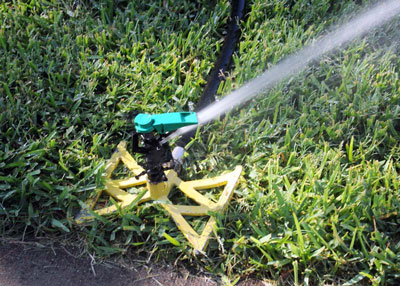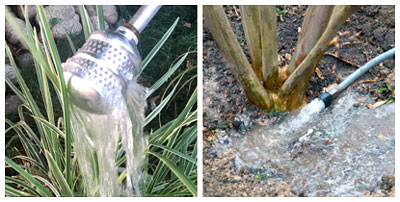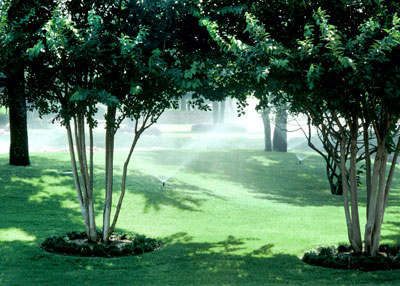Question of the Week: June 10, 2021

“Now that the rains appear to be stopping, how often should I plan on watering my plants?”
The reason I said that was the trickiest of all questions is because no one answer is always correct.
• What is the temperature? Plants will need to be watered more often at 104F than they will at 90F. You already had that part figured out.
• What is the humidity? Obviously, plants will dry out more quickly when things are arid around them. No surprise there.
• What is the soil type? Sandy soils can’t hold water very long at all. You’ll have to water plants in them more often than plants in clay soils.
• How long has the plant been growing in your landscape? New plants will still have most of their roots in their original soil balls. Those are lightweight potting soils (to keep shipping costs down). They’re porous, so they don’t hold water very well.

New Trees and Shrubs…
Plan on watering these by hand – with a garden hose and a water bubbler or breaker. Either of those devices will allow you to water at full volume without washing soil away from their roots.
Water the plants every couple of days now through early October, and apply an amount of water equivalent to the container size for each plant. In other words, if it came out of a 2-gallon pot, apply 2 gallons of water each time that you irrigate. Soak it deeply. If necessary, come back a few minutes later and soak it again.
New groundcover beds and annual and perennial gardens should be watered every 3 or 4 days, again with slow, soaking sprinklings. Watch the soil surface carefully, and if it begins to look dry, it’s time to water again.
Keep vegetables growing actively by watering and feeding them regularly. That will probably mean every two or three days. Blossom end rot is a common problem with tomatoes that are allowed to get too dry between waterings. The far end of the fruit becomes sunken, brown and hard. Step up your watering frequency and amount to correct it.

Established plants…
For landscape plants that you’ve had in your gardens for more than one year, plan on watering every three or four days. Water deeply, then let the soil begin to dry on its surface before you water again.
Turf will need to be watered deeply every three or four days. But even that can vary depending on all the things listed above. If you have a sprinkling system, have a “smart” controller installed. It will cost you a few hundreds of dollars, but those dollars spent will probably be returned within the first couple of summers. They’ve saved the Sperry budget hundreds of dollars each year.
Finally, a word about mulching…
There are many good features about mulches. They cut down on weed growth, and weeds waste water. They reduce erosion and splashing. But the most important factor this time of year is that mulches reduce soil-to-air contact, and that slows the rate at which the soil dries out.
I’m a big fan of organic mulches – bark, compost, pine needles, shredded tree leaves, etc. They look natural, and they decay to release valuable nutrients back into the soil. But if you prefer inorganic mulches such as roll-type fabrics or decorative gravel, they’re fine, too.
The important thing is that you do use some type of mulch.
